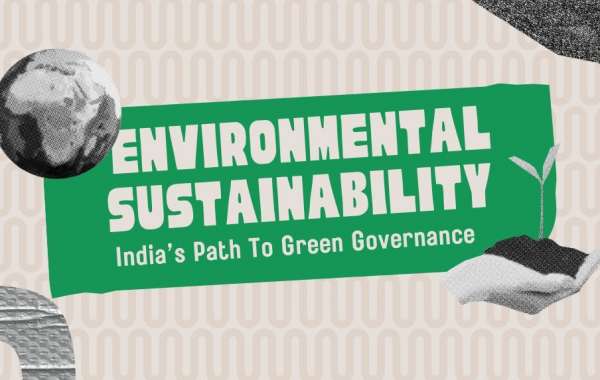Green governance is a relatively new and emerging field which is consistently attracting more attention from scholars. The governments across the globe are increasingly becoming keener to formulate policies with regards to green governance and take green governance more seriously than it was taken before. As green governance is a relatively new concept which is also extremely multidisciplinary in nature, not much research is conducted on the topic which makes it difficult to further develop this concept and incorporate this concept in policy making and decision making.
There are three major schools of thought which have attempted to define green governance. The first school of thought defines green governance as management. It defines "green governance as the government's visionary, strategic and participatory sustainable management of natural resources." The second school of thought defines and equates green governance with a governance structure. The third school of thought defines green governance as a part and parcel of the doctrine of sustainable development; or developing in the present in such a manner that the needs of the future are not compromised upon.
If attempted to be seen in a holistic and complete manner, green governance as a doctrine encompasses the postulates of all the three schools of governance.
GREEN GOVERNANCE IN INDIA- AN OVERVIEW
India was not very active in the field of environmental protection in general or green governance in particular until the 1970s. India attended the Stockholm Conference in the year 1972 and following its presence in the conference, the government of the country began taking environmentally friendly steps and decisions.
Following the Stockholm Conference, the Prime Minister at the time ordered the formation of a National Environmental Planning and Coordination Committee. Following the Stockholm Conference, the Central Pollution Control Board was set up along with various State Pollution Control Boards. On the central level, Environment Department came into existence in the year 1980 which was followed by various states staring their very own state environment departments.
Following the Stockholm Conference, various conservation projects such as Project Tiger, Project Hippo and Project Elephant were started to protect and conserve the targeted animals.
Even though green governance started to gain traction following the Stockholm Conference, adequate steps were not taken to that effect and even after the passage of a significant amount of time since the Stockholm Conference took place, an environmental tragedy at a scale of the Bhopal Gas Tragedy occurred.
Following the occurrence of the Bhopal Gas Tragedy, the Indian Government began to revisit its environmental policies and its policies of green governance. Ever since the occurrence of the Bhopal Gas tragedy, the Indian Government has started to take green governance more seriously and has even revamped its approach towards green governance.
ISSUES AND CHALLENGES OF GREEN GOVERNANCE IN INDIA
One of the main challenges that the Indian Government faces in promoting green governance in India is the difficulty it faces in ensuring compliance of people to the various environmental dictates launched by it. The record keeping and monitoring system in India is quite lax which further makes it difficult for the government to implement strategies of green governance.
GREEN GOVERNANCE IN INDIA AND PROMOTION OF SUSTAINABLE DEVELOPMENT GOALS
The United Nations Sustainable Development Goal 6 aims to make water more safe and accessible and sanitation facilities more widely available to the global population. It must be noted that water scarcity is an imminent global threat. It has been estimated that one in four people, or more, might experience water shortages on a regular basis by the year 2050 . The United Nations Sustainable Development 6 aims to combat this imminent threat and make water and sanitation facilities more accessible and safe. Certain goals have been set under the ambit of SDG 6 which the organization strives to achieve.
Deployment of better green governance strategies will ensure that SDG 6 is fulfilled.
It is an established fact that resources are becoming increasingly scarce and a non-judicious consumption of natural resources may yield disastrous results. As the global population is increasing and developing countries are planning more ambitious projects, it becomes even more important to utilize resources in a sustainable manner. Striking a balance between environmental sustainability and economic growth and implementing the same is one of the biggest challenges in the present times which needs to be combated. The United Nations Sustainable Development Goal recognizes this issue and has announced a set of actions through which this goal can be achieved. The goal strives to promote sustainable consumption of resources and a balanced development respecting both the environmental and the economic needs of the society. Deployment of better green governance strategies will ensure that SDG 12 is fulfilled.
CONCLUSION
It is true that the Indian government and policy makers are increasingly taking numerous steps to promote green governance in the country. Although the promotion of green governance is being made, the challenges behind the promotion of green governance must be addressed before green governance can become a ground reality in India and will ensure the promotion and attainment of the various United Nations Sustainable Development Goals.
Have questions or need expert legal advice? Don't hesitate to reach out to us!
Call us at 011-46101849 or +91-8178800668 , or drop us an email at info@ccalegalfirm.com . Our team at CCA Legal Firm is here to assist you.




